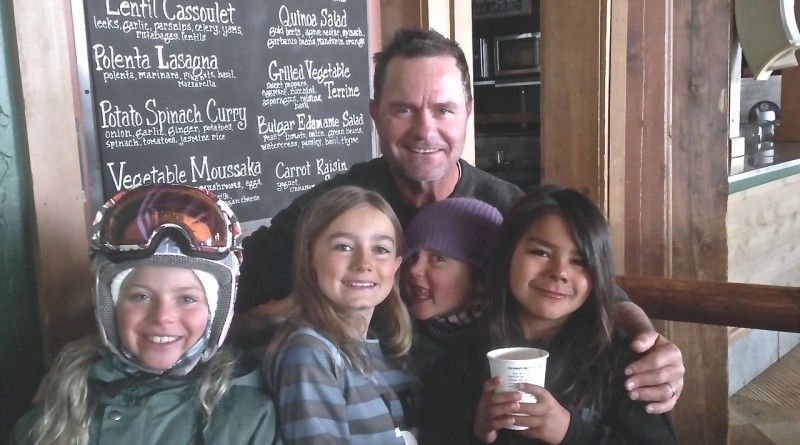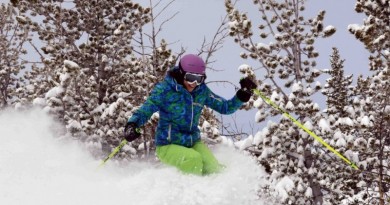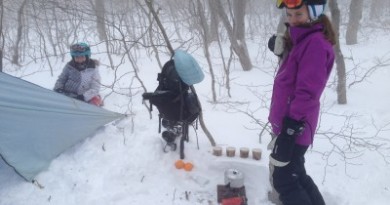5 Ways to be a Great Action Sports Parent
So your kid is becoming a hot skier or rider: now you can help, or you can blow it. Coach Bud Keene shows how.
There you are at the dinner table with your spouse and two young children. You’ve just enjoyed a great meal, when out of the blue the unspeakable happens: “Mom, Dad. I want to ride the halfpipe.”
How could this have happened? Since day one you have surrounded your kids with the tools and toys of your beloved sports. Indeed, some of your best moments together were spent teaching them to throw, hit, shoot, pass, volley, schuss, kick, or cast. Heck, you even got them baseball, football, hockey, tennis, soccer, or lacrosse bed-sheets and pillowcases! What went wrong?
“Calm down”, you tell yourself, “This is just a fad”.
Fast-forward to today. You are not a hockey dad or a soccer mom: you are an action sports parent. All of a sudden you find yourself with a son or daughter who is absolutely determined to go upside down.
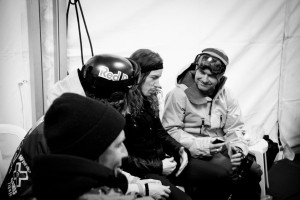
As a caring parent you want to help, but the truth is you don’t know anything about hitting a jump big, doing a 1080 in a half-pipe or hucking a cliff. And from what you can see, parents aren’t invited. You’re not alone and now it’s time for you, the parent, to step up.
First of all, don’t freak out. Though action sports differ in some ways from mainstream sports, they actually share many more similarities that will make you feel better about the whole thing. To wit, here are a few things that your kid will learn:
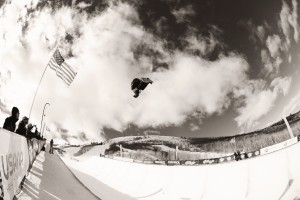
2013 Sprint U.S. Snowboarding Grand Prix
Photo: Sarah Brunson/U.S. Snowboarding
Physical strength and coordination. Jumping up on obstacles in a park or launching out of half-pipe or over a jump is as challenging as any gym workout. Strength, coordination, flexibility, quickness are all required. Plus, anything that gets your kid up off of the coach and outside in the fresh air is a good thing.
Life lessons. Kids learn all of the same important life-lessons from action sports such as park riding or skateboarding that you had hoped they would get from mainstream ones. Things like confidence, hard work and accomplishment, effort vs. reward, persistence, self-reliance, pride in a job well-done, practice-makes-perfect, accountability to a goal, you-get-out-of-it-what-you-put-into-it, tenacity, failure and disappointment and self-control.
They may even learn some of these lessons more sharply. One thing that is often overlooked by a parent when their child first gravitates toward action sports is that those kids are not afraid to take total responsibility for their success or failure. Rather than being able to hide away in a mainstream or team environment, they are actually putting themselves out there even more, so add confident individualism to the list.
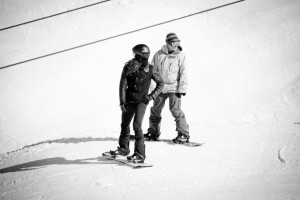
Teamwork. This of course brings up a common misconception: that kids are not learning to function as a “team.” The truth is, these kids who hang out in a park actually are part of a team. Not an “us-against-them” team, but rather an “all-for-one-and-one-for-all” team. They hold their sport, and all of its participants, in high regard. If you sit and watch a group of young freeskiers or snowboarders practicing in the same place, you quickly realize that what you assumed would be a bunch of individuals doing their own thing is actually a team working together toward a common goal. They support each other, they go to each other’s aid in case of mishaps, and they celebrate each other’s achievements with gusto.
It’s funny, because the philosophy of action sports participation truly embodies the maxim “It’s not whether you win or lose, it’s how you play the game.” That phrase gets a lot of lip service in many competitive pursuits, but in action sports it is truly lived. Does it really get any better than that?
Okay you’ve seen the light and have decided to support your kid in the sport of their choice. But what do you do? Do you just stay out of it and let your kid figure it out on their own? Or do you get involved, even though there doesn’t seem to be any roadmap for parent participation? You don’t want to get in their way or embarrass them, but you want to help out—it’s your kid after all! The good news is that you can, just follow these rules of engagement:
- Get the right equipment. Make sure that your kid is on good gear that is reasonably well maintained. Basically this is a money issue, and kids and teenagers don’t have a lot of it. Ask yourself the question: “If my kid were playing hockey, or football, or (insert mainstream sport here), how much would I be spending on their equipment?” Then spend a similar amount on the sport of their choice. I once had a parent who shopped at garage sales and even bought boots that were too big for his kid because “they were a good deal.” I’ve also seen parents spend thousands on gear that was way above their kid’s ability level. Neither approach was helping the kid’s chances of success. Get your kid gear that properly fits. Don’t cut corners, but don’t mortgage the house either.
- Provide opportunities. The nature of any sport is such that consistent access to good facilities increases proficiency. Football players need a football field. Hockey players need ice time. Action sports athletes need an arena for doing their thing too, so help them gain access. Give them rides to good parks, pipes, jumps, etc. Organize trips with their friends to cool facilities that will push their progression.I remember one parent who was so bummed that his kid chose an alternative sport that he said “Fine, if she wants to do that sport then she can figure it out on her own.” That is definitely not the way to be. It took several conversations with him, but I finally convinced that guy that he was taking a dangerous position: forcing his kid to catch rides in whatever car that she could, with whomever, and giving up the chance to help her make good judgments about her sport, her approach, her equipment and her social scene. He came around, and a few years later his daughter became a champion.
- Don’t try to be cool. More than once I have encountered parents who bought a little too far into the culture of cool that action sports exude. I let it go at first, when they showed up dressed head-to-toe in X- Games garb. But when they started rocking studded belts, and sagging their pants halfway down their butt, I stepped in and counseled them that they may have been undermining their role as a parent and were probably embarrassing their kid. Action sports are well known for influencing modern clothing styles and speech. That’s great of course, but it’s for them—not for you. Respect the boundaries of youth and culture, and avoid looking silly by dressing and talking too young.
- Learn and listen. Also, I regularly encourage parents to educate themselves about the game that their kid is playing. They will usually be judged events, and an Internet search will clue you in to what is considered good and bad form by the freeski or freeride judges, and when you should be congratulating them for their performance. To further bone-up on it, read the magazines, watch a few videos, and try to think like a 15-year-old: you’ll quickly catch-on.
- Keep them safe. Skiing or riding or racing or jumping can be dangerous. Some recent high-profile accidents have received a lot of exposure and there is no question that falls can take place. However, a recent study found that in 75% of accidents involving action sports in which an injury occurred, no protective gear was being used. The answer to that is easy: provide kids with helmets and lots of padding, and make sure that they use it.
It’s clear that acrobatics play a role in our sports, and for all parents this creates a level of discomfort. The best thing that you can do is to provide your kid with as many opportunities to practice acrobatic movements in a safe situation, before performing them for real. Diving boards, trampolines, foam pits, and other training aids exist to build air-awareness and confidence.
Your kid may not turn into the next Shaun White or Kelley Clark. He or she may fall and break a bone or two. But isn’t that true for any sport? Remember, this is their chance to shine. Let them. n

